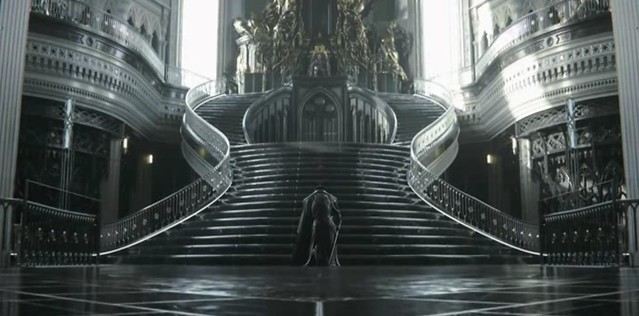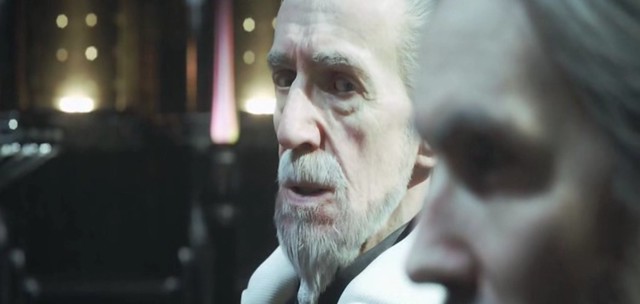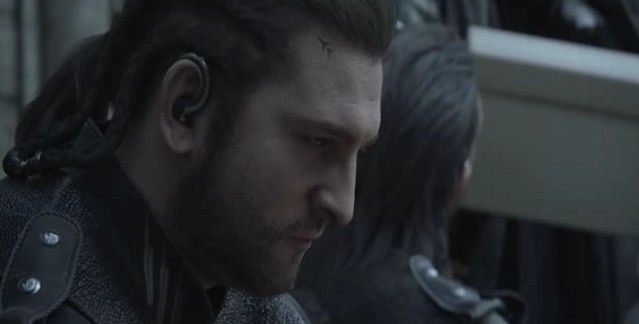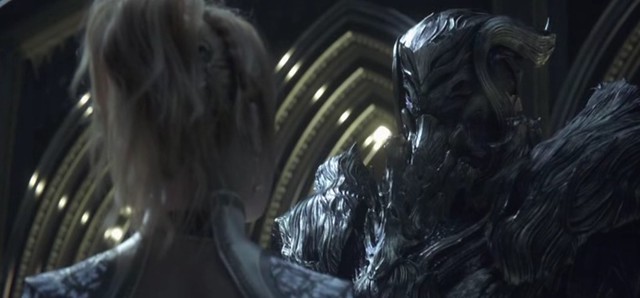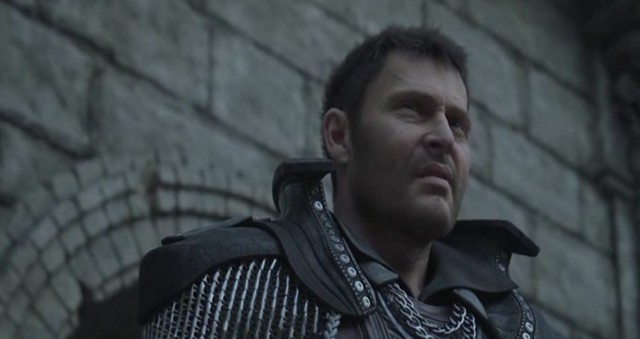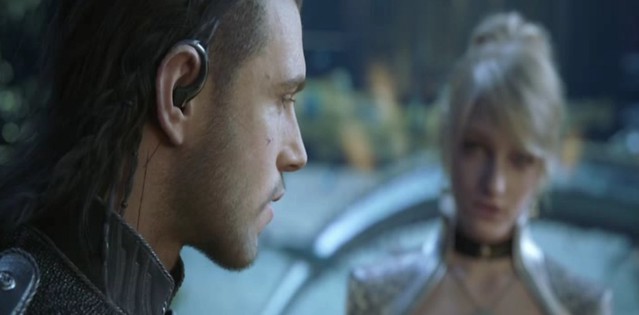Kingsglaive: Final Fantasy XV landed in theaters briefly before heading to Blu-ray and DVD. The film stars Aaron Paul, Lena Headey and Sean Bean in a lengthy standalone prelude for Final Fantasy XV, the JRPG due out later this year.
If you read any of the reviews for the near two-hour film you would likely step away thinking it’s one of the worst movies ever made. But don’t let the Rotten Tomato meter fool you or the Metacritic score deter you; many of the critics either weren’t paying close enough attention to the film itself or already had their low-score checklist primed and ready, well before firmly planting their butt cheeks into the cushioned theater seats.
Jeannette Catsoulis from the New York Times seems to imply that those who haven’t played the games might result in “brain addlement”. The review is a barely-there piece where Catsoulis admits trying to describe the film is “too ludicrous for words”.
But is it so much more ludicrous than the speeder bikes and ion drives of Star Wars? Or the hyper-drive systems and multi-use phasers from Star Trek? Is it so far fetched from the dragons that breathed fire in The Lord of the Rings or the Hobbits occupying the Shire just outside the reach of Mordor’s touch?
I went into Kingsglaive with little to no expectations and practically no details about the backstory of this particular tale. For the longest I didn’t even know that the Kingsglaive was the name of the king’s elite fighting unit trained and equipped to defend the kingdom.
My biggest worry was that the film would be too dense and would suffer from information overload. But surprisingly it was paced well enough for just about anyone paying attention to catch on. I do think some of the editing during the fight and action sequences got a little sloppy with all the fast cuts, but it was a lot more solid than critics had let on.
The New York Times piece doesn’t exactly explain what’s so “ludicrous” about Kingsglaive that makes it so much more hard to swallow or a film in which you cannot suspend your disbelief in order to be entertained, especially compared to other sci-fi fanfare.
Now I will admit that the uncanny valley rings about as loud as a sledgehammer on a shaolin temple gong. Even though the dead-eye effect is better than what appears in games like Call of Duty: Advanced Warfare, it’s not quite good enough to look real at all times, creating visual dissonance. Sometimes the main character Nyx could pass for an actual human on-screen, but other times the supporting thespians looked like 3D scans of real humans that didn’t get enough sub-surface light passes; but to digress and move onto a better point, I have to give credit to Square’s animation and modeling team because everything looks fantastic.
The improvements from Final Fantasy VII: Advent Children are obvious, and this time around the writers spent a lot more time giving us world building nuance and plenty of identity for the kingdom for which the disgruntled and battle-weary Kingsglaive fought. The city of Insomnia felt like some kind of realized mix between medieval-fantasy and contemporary modernity. It has a style all its own and the lighting team lovingly crafted the kind of visuals in which the cinematographers had a field day filming, nearly giving viewers wide panning shots of the sprawling city that seemed to reach out and make love to the screen.
To his credit, writer Christian Holub from Entertainment Weekly actually seemed to understand and appreciate the visual world building that went into Kingsglaive. Holub actually seemed to watch and follow the film. In the end he calls it a “pretty hollow film”, rating it a C+, giving potential movie goers little to take away due to skimping over the epic battles or the fact that the writers managed to squeeze down a rather complex political situation involving multiple machinations from various characters into a fairly easy-to-follow story.
This was the sort of film that could have easily gotten lost in itself. The character and city names are sometimes harder to pronounce (and remember) than cities in Thailand after taking several shots of tequila, and trying to remember the motivations of some of the characters could have become muddled without consistent reminders of their allegiance. Yet the story does a fine enough job of introducing newbies and veterans alike to a story ultimately motivated by fearful refugees, bitter soldiers and power-hungry megalomaniacs.
Obviously, the film has some loose ends given that a lot of the side-plots seemed to be built up to lead into the upcoming release of Final Fantasy XV, but at the same time – even as someone such as myself who wasn’t too read up on the characters and plot of Kingsglaive – I was able to catch on just by following the film and letting it tell the story from start to finish. Character motivations and story threads – even some of the thin ones – seemed to make sense by the time the credits rolled.
Andrew Baker from Variety called the plot “stupefyingly written” with a “borderline nonsensical plot”. What about it was exactly nonsensical? Well, his major gripe was a scene involving a tracker that Nyx and Luna (the two main characters) didn’t immediately get rid of. The two were desperately trying to figure out how things had turned out so bad and a crucial element of the plot had occurred that left Nyx stumbling to reorient himself. I was forgiving of his lapse of coming up with an immediate plan to get rid of the tracker given their situation. But did that make the plot nonsensical?
Nonsensical is having Batman try to mercilessly kill Superman because… well… because Superman was kind of really reckless in Man of Steel. Now that’s a nonsensical plot.
I also wonder if Baker thought The Hobbit: Battle of the Five Armies was “stupefyingly written” because the Dwarves decided to take back a castle guarded by a fire breathing dragon who loved gold (for reasons unexplained) instead of just settling on any part of the vast amount of land they covered in order to get back to the place guarded by a fire-breathing dragon? I mean, we can point out “nonsensical” plot points in otherwise brilliant movies all day long, but would I really say any of those points are enough to completely deter people from seeing the aforementioned films? Not really.
Britton Peele from Guide Live is a bit more adoring toward the movie, possibly due to his background in video game journalism, but still rags on the final end sequence, writing…
“[…] some of the muddled plot was clearly a sacrifice made for fancy visuals. The explosive final battle is the clearest example of this, where a fight between two humans (magical they may be) is accompanied by a fight between giants, a la a Godzilla-style monster movie. There’s barely any justification for this, and the magic involved is only briefly explained (there’s a ring involved, because of course there is). But dang, it sure looks cool.”
Without giving too much of the plot away, there’s like an entire dialogue sequence that precedes the final battle that literally explains the justification for the battle itself. Crazily enough, that dialogue sequence followed another scene where a character met an untimely fate that tied into the dialogue sequence that explains why the final battle has to take place. In fact, the battle actually ties up a very important plot point regarding a very important plot device in which the movie kind of centers around after the halfway point (after another character meets an untimely fate due to said plot device). Literally, everything after the halfway point kind of leads up to justifying the final battle.
Andrew Webster from The Verge decided to be the cool kid from the block, going against the grain where many of the other critics who gave the movie a poor rating at least admitted the plot did a fine job of easing newbies into the world of Kingsglaive. No, according to Webster the plot was too muddled for newbies.
In fact, while the other critics said the movie was too shallow, following tropes and cliches from sci-fi and fantasy a little too closely, Webster states that “narrative that tries to do too much” and later reaffirms that position by writing “the Kingsglaive story is too muddled to ease viewers to this new world.”
I’m actually more confused on what to think of the movie after reading the reviews than actually having watched it for myself. The plot is too muddled for some, too simple for others, too complex for a few more, and too dense for the rest. The only thing one can take away from all of these different opinions is that most of all the major critics didn’t like the story for one reason or another, but none of them can agree on why.
Heck, at least the hate for Batman v Superman was consistent.
Travis Hopson from Punch Drunk Critic takes the myopic route, simply steering everyone who isn’t a fanboy away by writing…
“Kingsglaive’s sole purpose is teasing Final Fantasy XV and if you have no interest in spending hundreds of hours of your life playing it, then don’t even bother.”
So obviously fans of sci-fi, cybernoir, cyber-fantasy and magitech wouldn’t be interested? Really?
Originally I saw all the negative vibes emanating from the typical erudite circlejerk and decided to steer clear of the film. Obviously movie critics know best, right? Wrong. As a fan of sci-fi and fantasy films films the only thing I should have steered clear from were critics.
